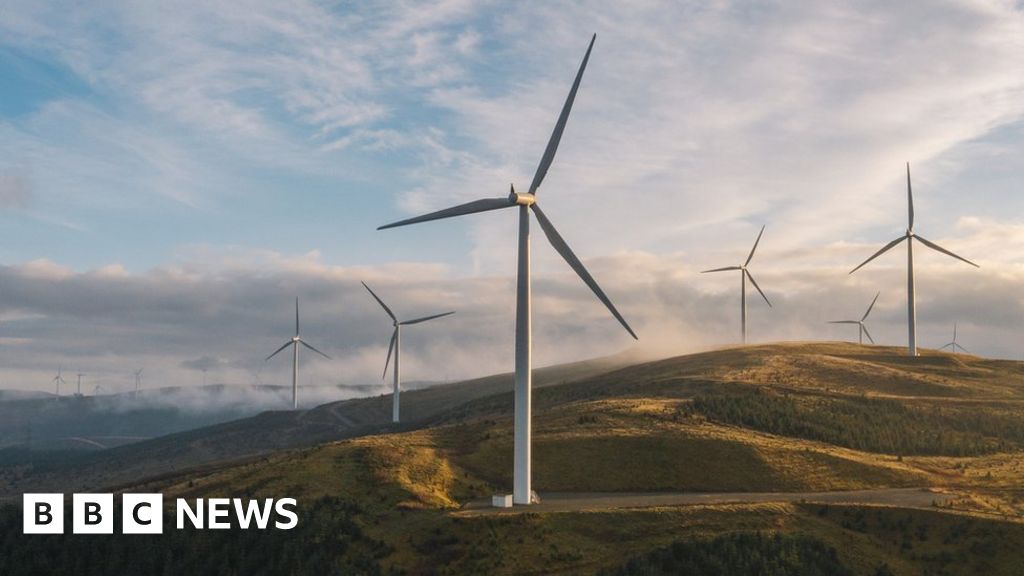Wasted wind power will add £40 to the average UK household’s electricity bill in 2023, according to a think tank.
That figure could increase to £150 in 2026, Carbon Tracker has estimated.
When it is very windy, the grid cannot handle the extra power generated. Wind farms are paid to switch off and gas-powered stations are paid to fire up. The cost is passed on to consumers.
When it is very windy, the grid cannot handle the extra power generated. Wind farms are paid to switch off and gas-powered stations are paid to fire up. The cost is passed on to consumers.
Energy regulator Ofgem announced new rules in November, which it said would speed up grid connections.
Most of the UK’s offshore wind farms are in England – Dogger Bank off the coast of Yorkshire is the largest in the world. Meanwhile, around half of onshore wind farms are in Scotland but most electricity is used in south-east England.
Carbon Tracker said the main problem in getting electricity to where it is needed is a bottleneck in transmission between Scotland and England.
The practice of switching off wind farms and ramping up power stations is known as “wind curtailment” and the costs are passed on to consumers, it said.
Wasted wind power will add £40 to the average UK household’s electricity bill in 2023, according to a think tank.
When it is very windy, the grid cannot handle the extra power generated. Wind farms are paid to switch off and gas-powered stations are paid to fire up. The cost is passed on to consumers.
That figure could increase to £150 in 2026, Carbon Tracker has estimated.
Energy regulator Ofgem announced new rules in November, which it said would speed up grid connections.
When it is very windy, the grid cannot handle the extra power generated. Wind farms are paid to switch off and gas-powered stations are paid to fire up. The cost is passed on to consumers.
When it is very windy, the grid cannot handle the extra power generated. Wind farms are paid to switch off and gas-powered stations are paid to fire up. The cost is passed on to consumers.
Energy regulator Ofgem announced new rules in November, which it said would speed up grid connections.
Most of the UK’s offshore wind farms are in England – Dogger Bank off the coast of Yorkshire is the largest in the world. Meanwhile, around half of onshore wind farms are in Scotland but most electricity is used in south-east England.
Carbon Tracker said the main problem in getting electricity to where it is needed is a bottleneck in transmission between Scotland and England.
The practice of switching off wind farms and ramping up power stations is known as “wind curtailment” and the costs are passed on to consumers, it said.
#Wasted #wind #power #adds #household #energy #bills #tank
Note:- (Not all news on the site expresses the point of view of the site, but we transmit this news automatically and translate it through programmatic technology on the site and not from a human editor. The content is auto-generated from a syndicated feed.))



